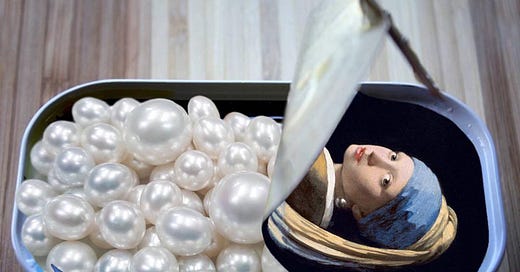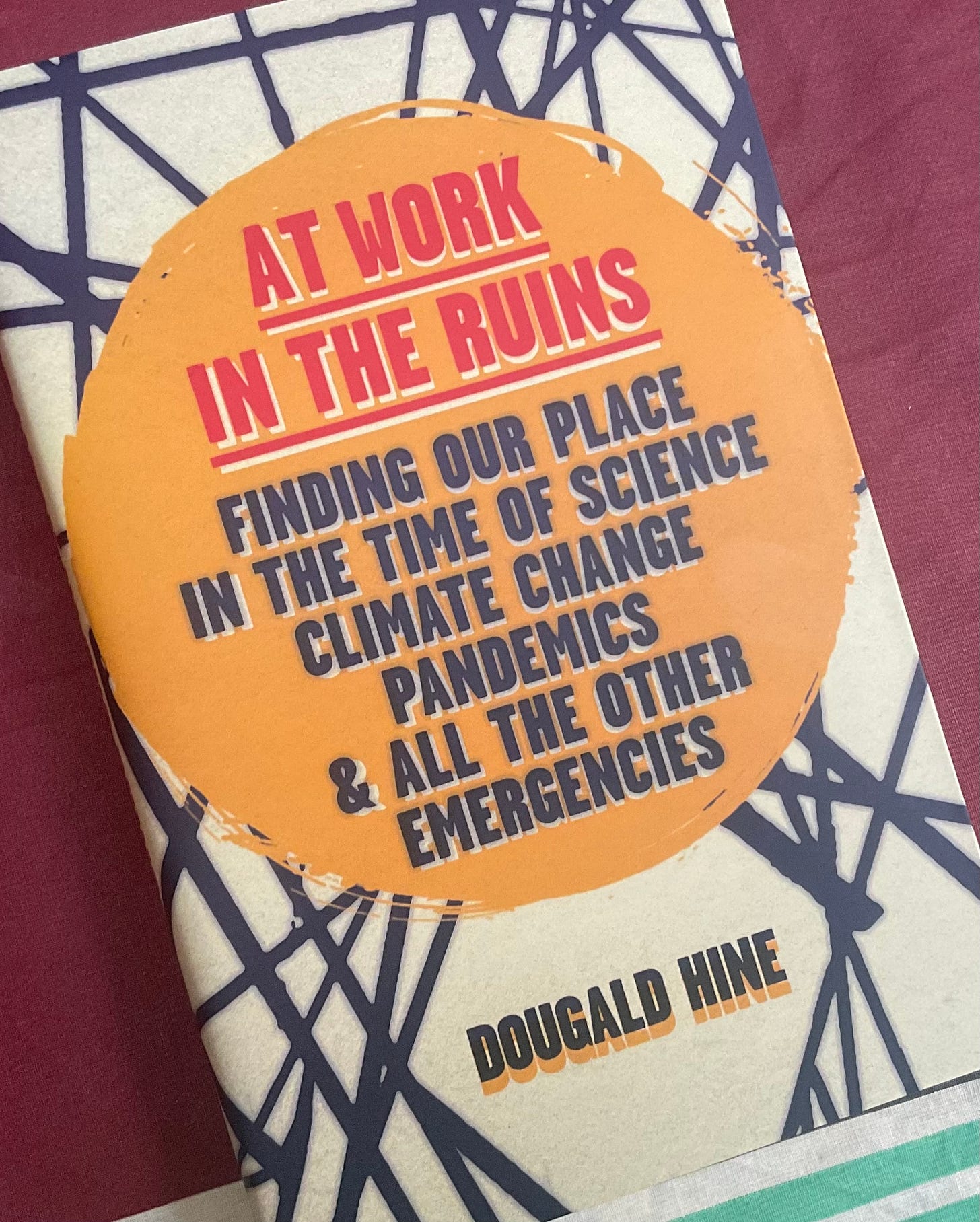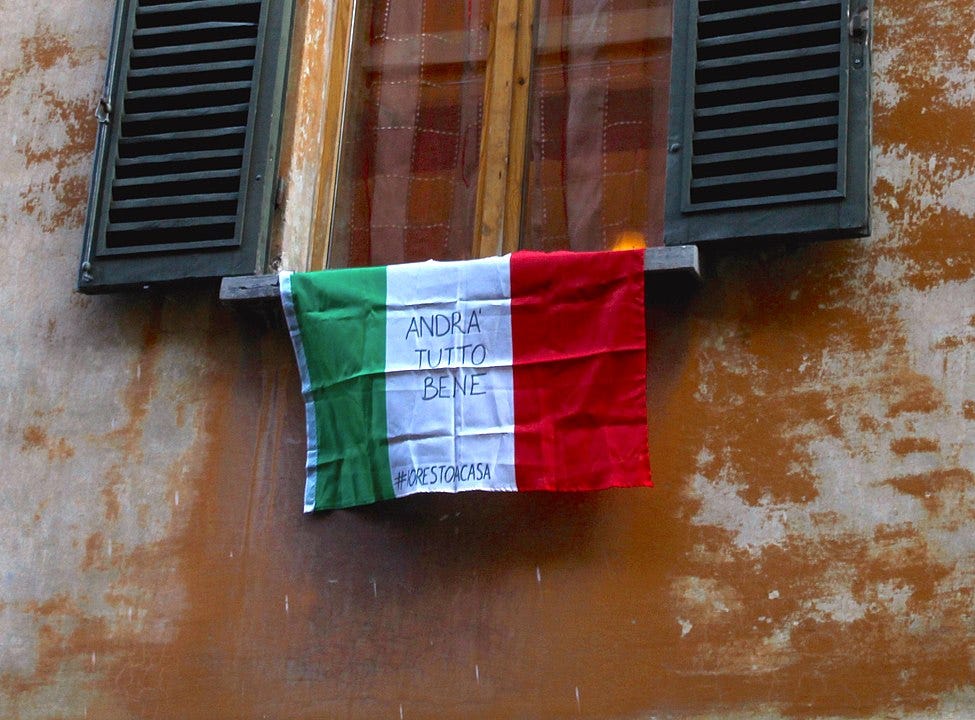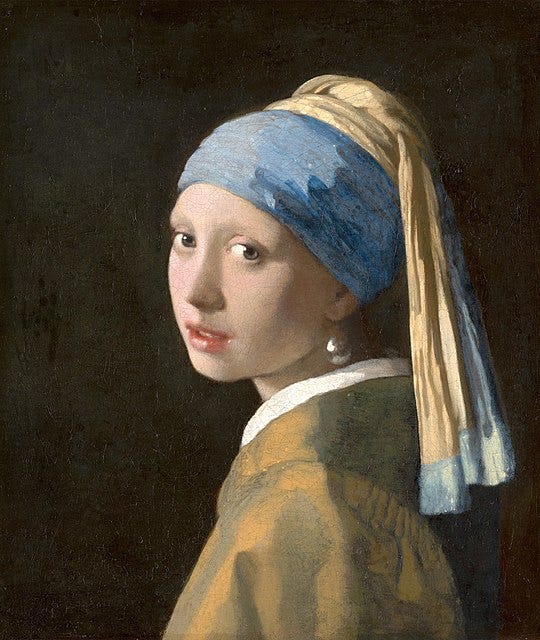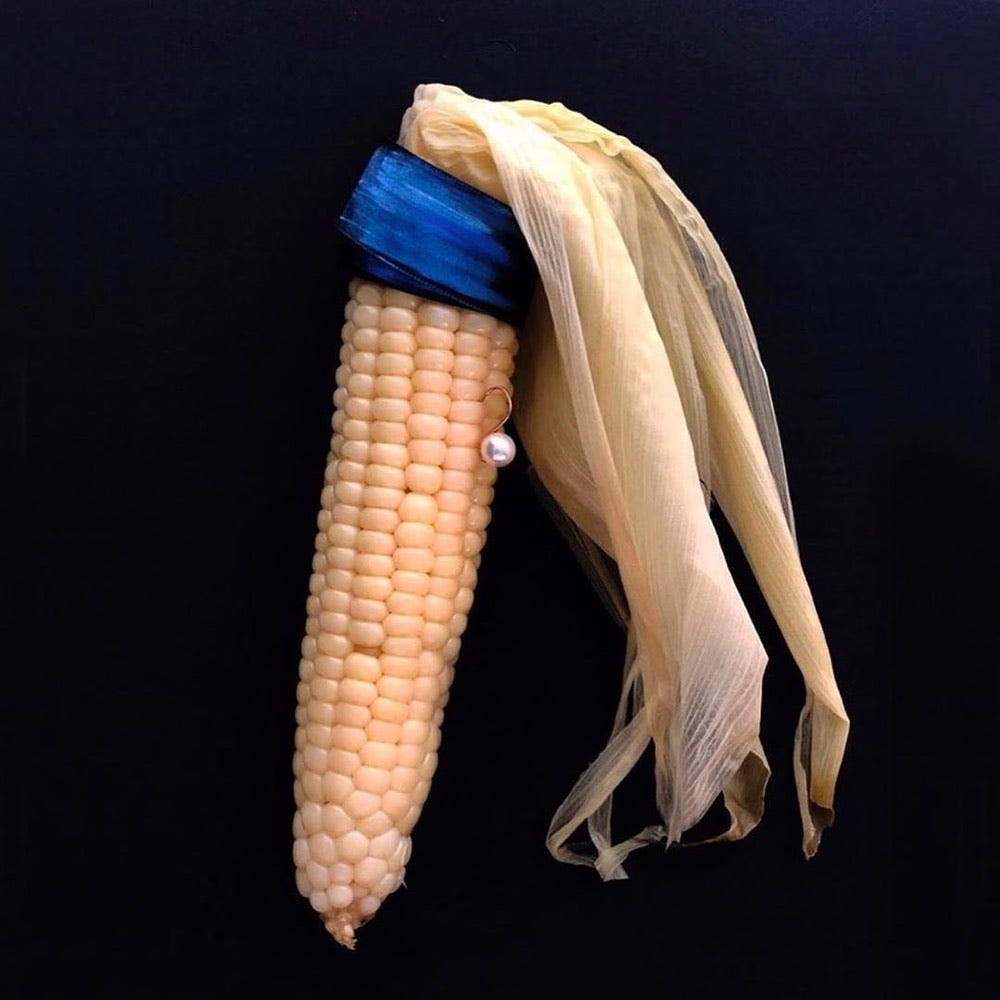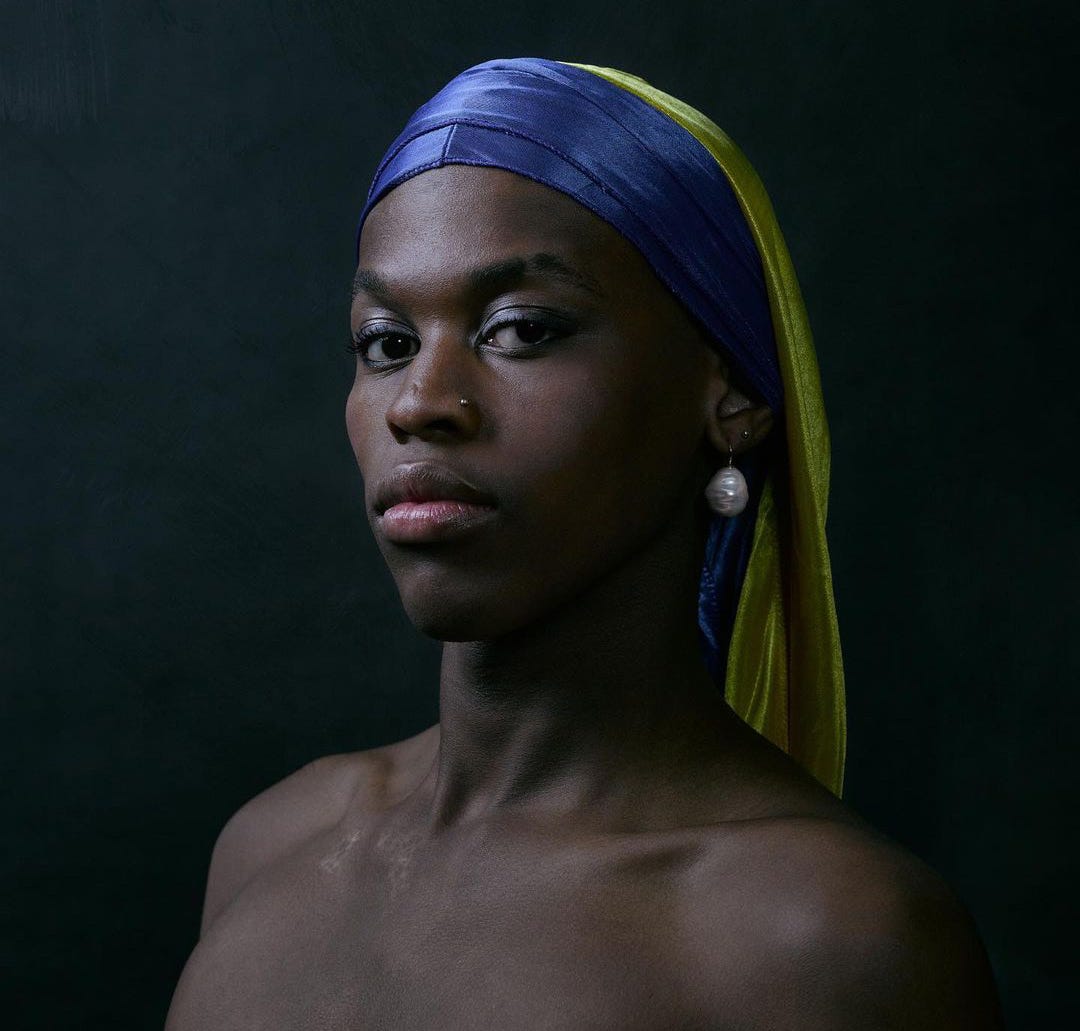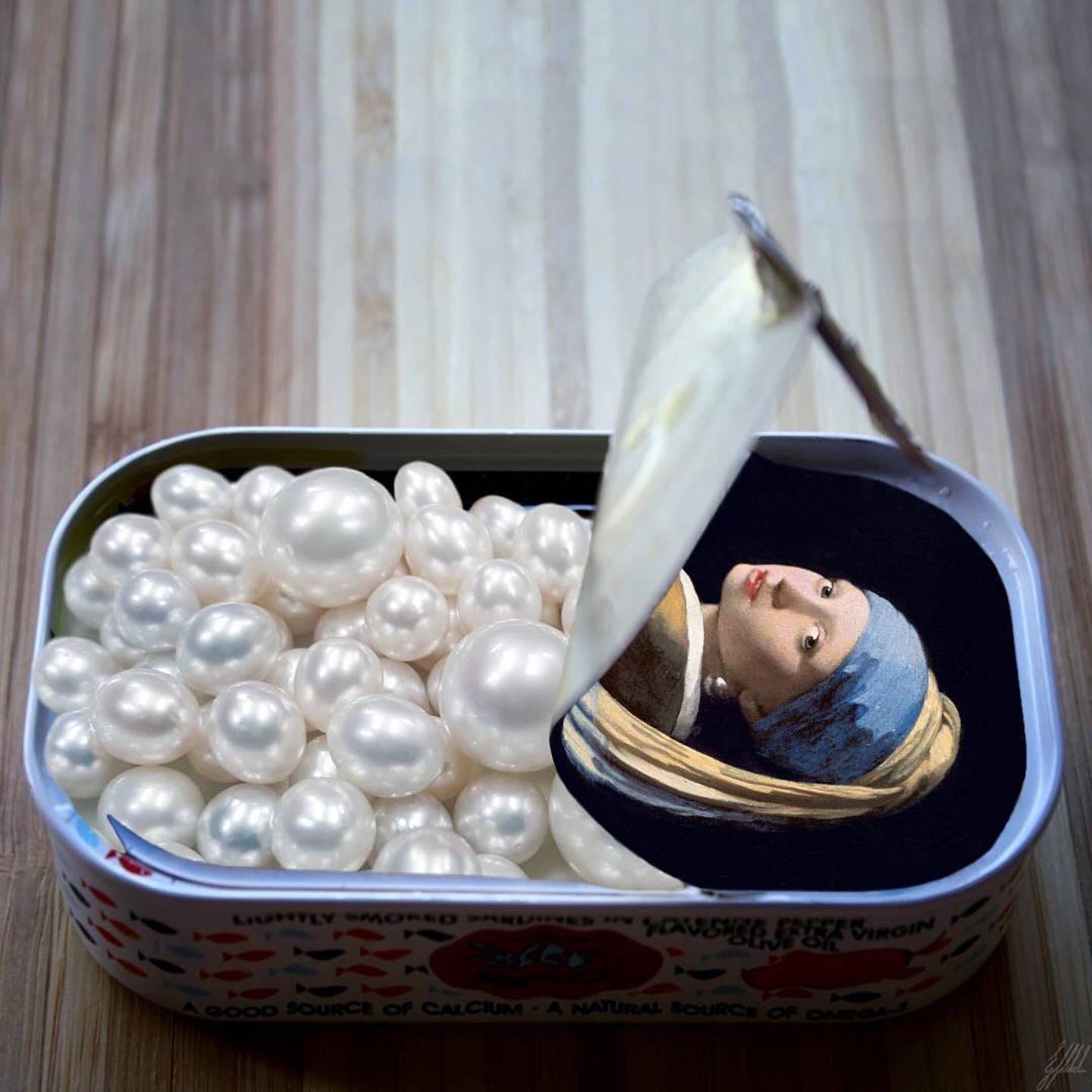11 March 2023. Crisis | Vermeer
We are all modern, or living in the ruins. // Girls with pearls.
Welcome to Just Two Things, which I try to publish three days a week. Some links may also appear on my blog from time to time. Links to the main articles are in cross-heads as well as the story. A reminder that if you don’t see Just Two Things in your inbox, it might have been routed to your spam filter. Comments are open. Have a good weekend.
1: We are all modern, or living in the ruins
I have mentioned Dougald Hine’s book At Work in the Ruins here a couple of times, and I have also recommended it to friends. But although my earlier piece captured a sense of the book, it wasn’t what I’d consider a review. So I hope that this (longish) piece will be a little more reflective.
The theme of the book is that our current crisis is because we have reached the end of modernity. It’s worth stepping back from this for a moment, because ‘modernity’ means different things to different people. Dougald Hine has been on this journey since he wrote, with Paul Kingsnorth, the ‘Uncivilization Manifesto’ in 2009 as a founding document of their Dark Mountain project.
At the time, he and Kingsnorth were both recovering journalists, and before I go on, it’s worth just saying that At Work in the Ruins is a very good read. The idea of ‘uncivilization’ was probably ahead of the times. I remember reading it then and thinking that there was something here that was not being said by a lot of people, but not quite knowing what to do with it.
This is from the Dark Mountain Manifesto:
The myth of progress is founded on the myth of nature. The first tells us that we are destined for greatness; the second tells us that greatness is cost-free. Each is intimately bound up with the other. Both tell us that we are apart from the world... The very fact that we have a word for ‘nature’ is evidence that we do not regard ourselves as part of it. Indeed, our separation from it is a myth integral to the triumph of our civilisation.
Looking at my notes, I’m not sure that Hine defines ‘modernity’ anywhere in the book, although he conveys well enough what it means and why it might be ending.
He comes quite close, however, early on in the book:
The second claim (that I can steer by) came out of the conversation started by that manifesto: The end of the world as we know it is also the end of a way of knowing the world. When a world ends, its systems and stories come apart, even the largest of them; the stories that promised to explain everything, the systems that organised all that could be said to be real. It's not that those stories had no truth in them... It's that they couldn't hold. The things they valued betrayed them; the things they left out came back to haunt them. One name for the world as we have known it is modernity; one name for its way of knowing the world is science. So this is also a book about navigating the end-times of modernity and what happens to science as its world ends (p.5).
For people who might prefer something more concrete to stand on, I wrote with Hardin Tibbs a paper about a decade ago that tried to understand the global financial crisis, which saw it as a crisis of overlapping S-curves, each reaching their terminal stages. The longest of these was the ‘modernity S-curve’:
All of these curves, however, are subsets of the overarching long wave of modernity that can be traced back to the 17th century... The dominant feature of modernity, according to Martin Albrow (1998), is that it is always expanding. At the beginning of the modern era the entire globe represented the basic geographic space for expansion. Now that modernity is operating at a global level, globalisation proves not to be the next expansion stage for modernity, but its saturation point.
Climate change is one type of evidence of this saturation point, and Hine has spent a decade in those discourses about climate change. Somewhere during that decade, the notion has crystallised for him (it was implicit in the Manifesto), first, that climate change is a symptom of the wider crisis of modernity, and second, that the choices we make in response to climate change can either represent a doubling down on ‘the myth of progress’, or an acceptance that we need new myths.
One thing he’s very clear on, however, is that we are all modern now. We just get different outcomes from our exposure to modernity:
Modernity has two faces, suggests the Argentinian decolonial thinker Walter Mignolo, as inseparable as the faces of a coin. He calls them 'the shine and the shadow’... The divisions that run through the world are not about some of us living closer to the future than others. No one is out in front or left behind. All around the world, people are living with the consequences of modernity, their lives reshaped by the needs and desires of its beneficiaries (p33, p105).
As an essay by Chris Smaje puts it:
the poor farmers and rural proletarians working across the fields and plantations of the world, the Bangladeshi sweatshop workers and the Filipina maids in the world's great cities have not been left behind' by modernity but have lived it every bit as much as the Silicon Valley millionaires and the San Francisco policy analysts (p105).
The book spends perhaps the first half treading carefully through the arguments about the relationships between climate change, science, and worldviews—and of course this is ground where you do need to tread carefully. Eventually, a couple of striking metaphors pop out.
The first of these is about a fish tank, specifically a fish tank belonging to the son of his Dark Mountain collaborator Paul Kingsnorth:
What strikes him is the complexity of maintenance involved in keeping a handful of small fish alive: the rituals of cleaning and water-change, the electric filter with its own maintenance cycle, the whole chemistry kit that goes into testing and adjusting half a dozen key indicators of the condition of the water. All this to do a small part of ‘what a river or a lake does for free and with ease’ (p147).
The second metaphor, a couple of pages later, is about hens. Richard Smith was also struck by this in his Lancet article about the book. The metaphor comes from a Palestinian mathematician, Munir Fasheh, whose work has traced the ways in which modernity ‘first ignores and then destroys forms of knowledge that don’t serve its systems’ (p148).
There’s a phrase used by Palestinian Arabs for the reverse of this, which is the ‘strange helplessness that modernity seems to take for granted’: “It is like an Israeli hen”.
I don’t think there’s a directly political point being made here, although it is true that Palestine and Israel—not by chance— represent two adjacent versions of modernity:
The difference between the Israeli hen and the indigenous Palestinian hen is that the first cannot survive, grow, or produce eggs without special shots, a special mixture of food, specific temperatures, and a specific schedule; it requires some kind of ‘scientific and rational’ planning and constant support from outside... In short, if this ‘technological' hen is taken out of its 'artificial and ideological’ environment and put into the real environment, it will have difficulty surviving (p149).
(An Israeli hen. Ilana Shkonik, Wikimedia Commons, CC BY 2.5)
Somewhere inside this metaphor is Hine’s attempt to explain the gap in our understanding of the world created by the pandemic. (With climate change, the pandemic is the other long shadow haunting the book). Again, this is a place where Hine treads carefully, but a series of readings of some of the more reflective arguments on the politics of lockdown gets to one of the most interesting arguments I’ve read about the particular crisis represented by the pandemic.
Let me try to unpick this, perhaps a little less carefully.
In terms of morbidity, other epidemics in living memory, such as the flu pandemics of 1957-58 and 1968 killed worldwide two million and one million people respectively. Yet on those occasions, governments did nothing, and people didn’t expect them to do anything.
Hine’s suggestion here is that what’s changed in the meantime is the capacity of households and communities to care for the sick and dying. Instead, this has to be done in the health system: ‘death requires us to pass through the bottleneck of hospitals and care homes’:
Any significant deviation from the averages on which the capacity of the system is based threatens to overload the system as a whole and create a cascading failure leading to many more deaths. This was the nightmare glimpsed by Western leaders as the virus began to spread in northern Italy. The prospect of hospitals and health services collapsing under the strain of a surge in cases drove the rush to lockdowns (p139).
(‘Everything’s going to be alright’. Photo from the pandemic in Italy by Pietro Luca Cassarino. CC BY-SA 4.0.)
As it happens, this precise point had been made some years before the pandemic by the British scientist Martin Rees. Rees noted that during the Black Death villages continued to function even when they lost half their population. Now, society would be vulnerable to breakdown as soon as health services were overwhelmed—at maybe a 1% death rate.
Hine quotes a conversation he had with a friend in the early days of lockdown:
A disease is when a person gets sick—but a pandemic is when a society gets sick.
In that gap, between the seriousness of the symptoms and the stringency of lockdown, a whole lot of conspiracy theories come to nest. But there is a gap, and the gap is about what happens when modernity has induced social helplessness. Because:
Modernity... is born out of destruction: the destruction of the fabric of the living world and the destruction of culture (p191).
But it has also destroyed our capacity for coping. It’s not chance that Ivan Illich is referenced here from time to time.
I’ve written elsewhere that the test of an idea about the future is how well its underlying theory of change fits the evidence, and how well it stands up to the arrival of new evidence. At Work in the Ruins seems to me to fit the evidence well. One of the reasons for this, I think, is that it does take a global view—there are voices in this narrative from across the planet, and from outside the mainstream. Another is that he has been deep enough inside the debates on climate change to navigate them in a nuanced way. Another is that although he wrote the book in seven weeks, there’s 20 years of thinking in here.
It is not exactly a self-help book, but towards the end he does offer some hints as to how to live and work in the ruins of modernity. We can salvage the good things that modernity has brought that can be taken with us. We can mourn the good things that we will lose.
We can be discerning, and notice the things within our way of living that were never as good as we thought they were. And we can look for the dropped threads: the skills and practices that could be useful that have been pushed to the edges, which we might want to pick up again.
I normally order books such as At Work in the Ruins and get round to reading them months later. I’d finished this in a few days of picking it up from the doormat.
(Note: post updated on 15th March 2023 to clarify the effects of the different epidemics.)
2: Girls with pearls
Of course, Vermeer’s vastly-loved painting ‘The Girl With the Pearl Earring’ is in Amsterdam at the moment, taking part in the completely sold-out Vermeer exhibition at the Rijksmuseum.
(‘Girl with a Pearl Earring’, 1665, by Johannes Vermeer. Public domain)
Well, you’ve got to love art curators, because while it is away its usual home, the Mauritshuis in The Hague, has put on a show called ‘My Girl With a Pearl’, based on an open call for submissions last year which produced 3,500 entries. 170 of these are on display at the Mauritshuis:
Mediums and styles vary widely, and the installation features everything from an abstract iteration using multi-color rubber bands to elegantly photographed portraiture to the viral corn-cob figure.
The exhibition at the Mauritshuis runs until 1st April, when the original is due to return. But many of the competition works are also to be found on Instagram.
Here’s a couple of the ‘My Girl’ artworks—these’s another one lower down.
(Nanan Kang. All images courtesy of the Mauritshuis)
(Lab 07. All images courtesy of the Mauritshuis)
In other ‘Pearl Earring’ related news it turns out that the pearl was most likely a fake, or, more politely, an ‘imitation gem’, according to research by the co-curator of the Vermeer exhibition, Pieter Roelofs:
About half of the Dutch painter’s works include pearl earrings or necklaces that were in fashion in the latter portion of the 17th century. However, this jewelry had to be shipped to the Netherlands from South Asia and was exorbitantly priced as a result. The tronie that highlights the earring has the largest gem of the four studies. Roelofs explains that based on the size and weight of most pearls imported at the time, Vermeer wouldn’t have been able to afford the earrings he painted and likely referenced imitation glass pearls instead.
(Ege Islekel. All images courtesy of the Mauritshuis)
j2t#434
If you are enjoying Just Two Things, please do send it on to a friend or colleague.
